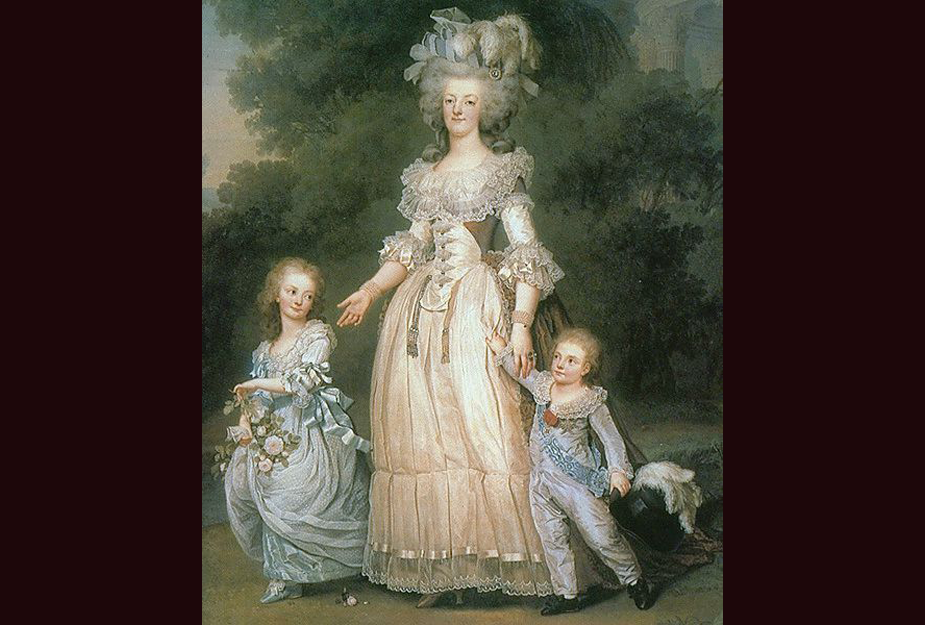
It was written by the Marquis de Lafayette, with help from his friend and neighbor, American envoy to France, Thomas Jefferson. The Declaration des Droits de l'Homme et du Citoyen passed in 1791 is a fundamental legal document of the French Revolution and in the history of human rights. Abbé Sieyes' Préliminaire de la Constitution, Reconnoissance et Exposition Raisonné des Droits de l'Homme et du CItoyen (Call No. DC165.A1) was published in 1789, and provides a detailed explanation of why a document protecting the rights of French citizens was so important.

Abbé Sieyes, a member of the clergy elected to represent the Third Estate, was a member of this committee and he wrote a detailed preliminary rationale for what would become the Declaration des Droits de l'Homme et du Citoyen. There were many proposals for redefining the French state-especially after feudalism was abolished in August of 1789. This committee was composed of two members from the First Estate, two from the Second, and four from the Third. Its task was to draft the articles of the new constitution. Declaration de l'Homme et du Citoyen, 1789Ī twelve member Constitutional Committee was convened by the National on J(also the same day as the Storming ofthe Bastille).
WE. THE REVOLUTION ACT 1 MARIE ANTOINETTE SERIES
Volume two of this series also has a significant number of documents that relate to the founding of the French Constitution (see below). The Procès-Verbal de l'Assemblee Nationale (Call No. DC165.A1) includes almost nine volumes of primary documents relating to the Assembly and its members from 1789-1791. Texts outlining the efforts of the National Assembly in the collection include: Furthermore, the people of Paris took to the streets in support of the Assembly, creating a chaotic atmosphere in the capital. However, all of the representatives of the people stood firm, as they had not written a constitution themselves as their oath from the previous week had promised. After this show of defiance by the National Constituent Assembly, relations between the Assembly and the monarch broke down. Louis XVI unwillingly acquiesced to the demands of the National Constituent Assembly and granted a constitution of sorts, though nothing near as progressive as what the Assembly had hoped for. After this point, the National Assembly renamed itself the National Constituent Assembly. There, they swore that they would not dissolve until France had a written constitution. This "tennis court oath" was both a revolutionary act and an assertion that political authority derived from the people and their representatives, rather than from the monarch. However, the Assembly simply found another place to meet on a tennis court outside of the building. On June 19, only two days after the National Assembly convened itself, Louis ordered the Estates to separate and the building in which the National Assembly met closed while he prepared an adequate response. However, the Assembly considered itself to be acting in the king's interests and originally they declared all their laws subject to royal approval.ĭespite the statements of good faith expressed by the Third Estate to the King, Louis XVI was outraged at the audacity of the Third Estate.


Henceforth, sovereignty was to reside not in the person of the monarch but in the nation, which would exercize it through the representatives it elected.

They took sovereign powers in respect of taxation and decided to frame a constitution restricting the powers of the king. This Assembly called themselves the "National Assembly" since they represented at least 96% of the nation. It was a revolutionary assembly formed by the representatives of the Third Estate of the Estates-General. The National Assembly existed from Jto July 9, 1789. The Events of 1789 & the French Revolution The National Assembly Archives & Special Collections possesses a number of texts and pamphlets from the Revolutionary period (1789-1799) that outline the main events of the revolution, including the convocation of the National Assembly, the publication of the Declaration des Droits de l'Homme et du Citoyen, the Women's March on Versailles, the Constitution of 1791, and the Champs de Mars Massacre.


 0 kommentar(er)
0 kommentar(er)
